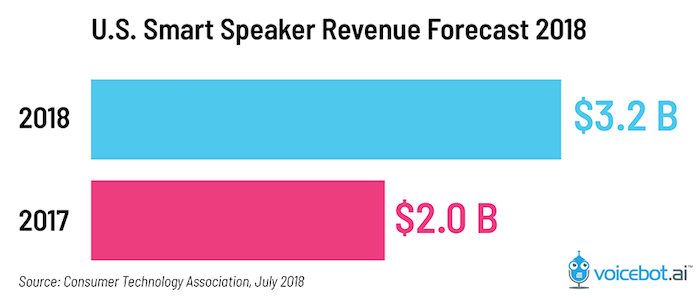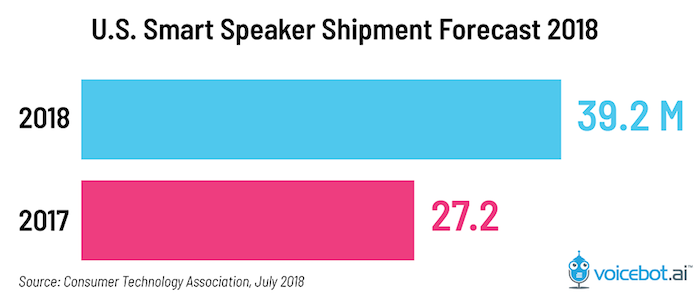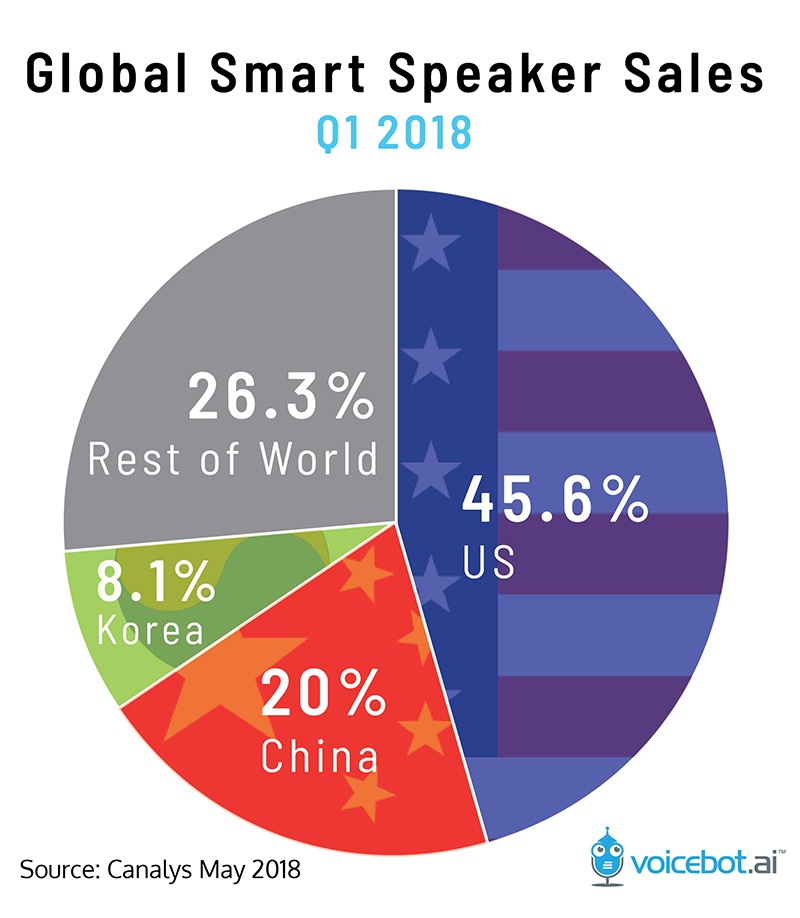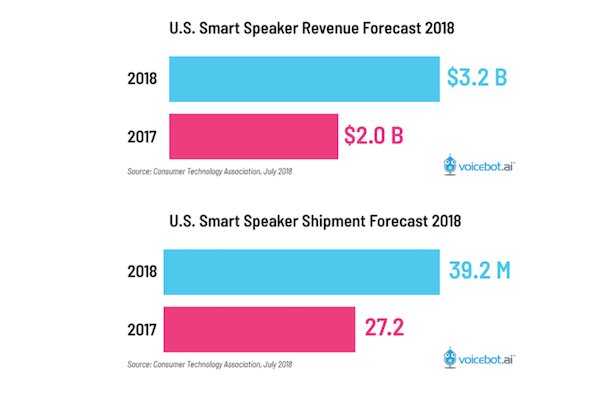CTA Says U.S. Smart Speaker Sales will Reach $3.2 Billion, 39 Million Units in 2018
Consumer Technology Association (CTA), best known as the host of CES, recently released its U.S. Consumer Technology Sales and Forecasts mid-year update and smart speakers are a prominent focus. The media release begins by saying, “Artificial intelligence (AI), voice-recognition technology and fast connectivity – critical ingredients for smart speakers, smart home technologies and smartphones – will help spur overall U.S. consumer technology industry revenue to $377 billion in retail revenues in 2018, a six percent increase.”
The organization reported that 2018 smart speaker sales are expected to reach 39.2 million units, a 44% rise over 2017. That sales growth is forecasted to net smart speaker makers $3.2 billion in revenue up 64% over $2.0 billion sold in 2017.


Comparing CTA Numbers to Other Smart Speaker Sales Forecasts
First, it is important not to confuse installed base with units sales. The CTA forecast is about units sales and shipments to retail, wholesale and direct to consumers. A recent Canalys forecast estimates that the smart speaker installed base will reach 100 million people worldwide in 2018. That is not sales in 2018. It includes consumers that purchased devices in previous years. This number is in contrast to a January forecast from Canalys that suggests 56.3 million smart speakers will be sold worldwide this year. That forecast also estimated that 68.2% of smart speakers will be sold in the U.S. which translates into 38.4 million units. This estimate is only 800,000 units less than CTA estimate or about a 2% variance.
Both Canalys and CTA base their forecasts on supply chain data provided by manufacturers and not on consumer surveys. The fact that these forecasts are very close and that the higher number came six months later and after the introduction of Apple’s HomePod, suggest a convergence of estimates. This is expected as product markets mature and consumer purchasing behavior becomes more predictable.
Variance Going Forward Likely to Be Non-U.S. Markets

Smart speaker markets are far less mature outside of the U.S. and Europe, particularly in Asia. This is where sales forecasts will likely be more variable from analyst to analyst. Canalys reported that only 45.6% of smart speaker sales in Q1 2018 we sold in the U.S. with China and South Korea together accounting for 28% of shipments. U.S. shoppers will be expected to outspend other countries in the Q4 holiday season when historically about 50% of device sales occur. This may rebalance these numbers, but it may be that international smart speaker sales surprise analysts and break out above one-third of global shipments.
Could Apple Command the Highest Revenue?
Another interesting development to follow is how much of smart speaker revenue is commanded by Apple. The company is famous for earning over half of global smartphone revenue despite capturing only about 15% of annual device sales worldwide. A recent forecast by CIRP suggests as many as three million HomePods have been sold in the U.S. which suggests over $1 billion in smart speaker revenue for Apple. If HomePod were to make up 10% of new sales in 2018, that would result in 3.9 million units sold, but 43% of smart speaker industry revenue. If that is the case, you would see Amazon, Google and Sonos splitting the rest of the revenue pie with no one reaching more than 33% share of category revenue. The $349 HomePod list price may scare off a lot of cost conscious consumers, but it certainly has the potential to drive a lot of revenue for Apple.
Follow @bretkinsellaFollow @voicebotai
CIRP Says Apple Has Sold 3 Million HomePods in U.S., Suggesting $1 Billion in Sales
Smart Speakers to Reach 100 Million Installed Base Worldwide in 2018, Google to Catch Amazon by 2022









